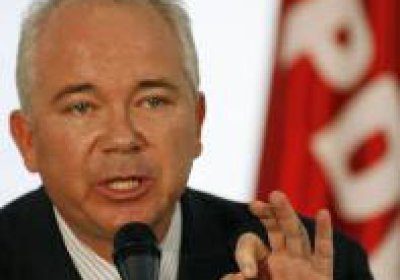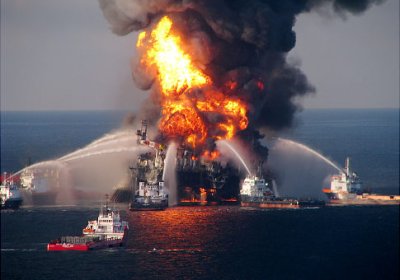In August, Truthout conducted soil and water sampling in Pass Christian Harbor, Mississippi, on Grand Isle, Louisiana, and around barrier islands off Louisiana’s coast to test for the presence of oil from BP’s Macondo Well.
Laboratory test results from samples taken reveal very high concentrations of oil in the soil and water. These results contradict consistent claims by the federal government and BP since August that much of the Gulf of Mexico is now free of oil and safe for fishing and recreational use.
oil rig
“An oil platform explosion on September 2 in the Gulf of Mexico forced the crew to jump into the sea and threatened further damage to waters still recovering from the BP disaster”, AFP said that day.
The explosion on the platform, owned by Houston-based Mariner Energy, comes in the aftermath of the BP-owned Deepwater Horizon rig explosion in the gulf in April, which killed 11 workers. Bloomberg.com said on August 20 that 4.9 million barrels of oil escaped from the leaking well.
The head of Venezuelan state oil company PDVSA said on June 24 that the government is to nationalise 11 oil rigs previously operated by a US petroleum firm. This comes after the company, Helmerich & Payne, closed down production and refused to negotiate a new services agreement.
PDVSA president Rafael Ramirez said the nationalisation would “boost domestic production of hydrocarbons and strengthen the policy of full oil sovereignty”.
The world’s worst ever oil spill is also the biggest methane leak in human history, US government scientists have said.
The US Geological Survey’s “flow team” has estimated between 4.5 billion to 9 billion cubic feet of natural gas have escaped from BP’s Deepwater Horizon rig since it exploded in April, Associated Press said on June 19.
John Kessler, an oceanographer at the Texas A&M University, told AP the leak was “the most vigorous methane eruption in modern human history”. Scientists think methane makes up 40% to 70% of what is spilling from the damaged BP rig.
British Petroleum (BP) has admitted it may not stop the Deepwater Horizon oil spill in the Gulf of Mexico until August — at the earliest. But despite the catastrophe, the US government’s Minerals Management Service (MMS) has given BP new leases for deepwater drilling.
The MMS has rubber-stamped 198 new deepwater drilling leases in the gulf since the BP spill began on April 20. It awarded BP 13 of these.
The US's worst-ever environmental disaster took yet another bad turn after British Petroleum's (BP) latest efforts to stop the torrent of oil from the Deepwater Horizon well failed.
Public discontent is growing, with increasing calls for a government takeover of the operation and seizure of BP’s assets.
The Deepwater Horizon oilrig exploded on April 20, killing 11 workers and releasing between 19.7 million and 43 million gallons of oil into the Gulf of Mexico.
The crude oil belching out of the floor of the Gulf of Mexico since the explosion on BP’s Deepwater Horizon oil rig on April 20 has formed giant plumes beneath the surface of the water.
That’s the latest nightmarish evidence that the gulf oil catastrophe, among the worst ecological disasters in US history, is much worse than either corporate giant BP or government officials have admitted.
The oil spill disaster in the Gulf of Mexico is likely to be far worse than oil rig owner BP has admitted.
Independent analysis carried out for the US National Public Radio (NPR) indicated the company has vastly underestimated the size of the spill. Experts told NPR on May 14 the spill could be 10 times bigger than the company says.
An ex-oil worker has told the May 12 Huffington Post that oil giant BP often faked reliability tests for equipment meant to stop spills such as the Deepwater Horizon spill, which began on April 20.
Mike Mason, an oil worker in Alaska for 18 years, said he personally witnessed more than 100 occasions when BP employees manipulated tests on safety valves designed to cut off oil flow in case of emergencies. He said the tests would determine whether the valves could withstand certain amounts of pressure for five minutes at a time.
When setting a giant oil spill on fire is the least-worst option to limit environmental damage, you know you're in trouble.
But that appeared to be the case as US authorities debated how to contain an spill caused by the failure in April of a deepwater oil rig — owned by the oil giant BP — about 80 kilometres off the US in the Gulf of Mexico.
On May 2, the Times of London reported that Professor Ian MacDonald, an ocean specialist at Florida State University, said satellite data suggested the leak has already spread 9 million gallons of heavy crude oil.







